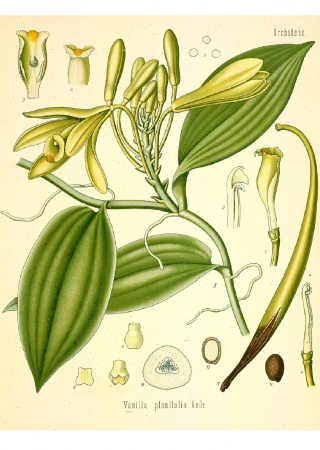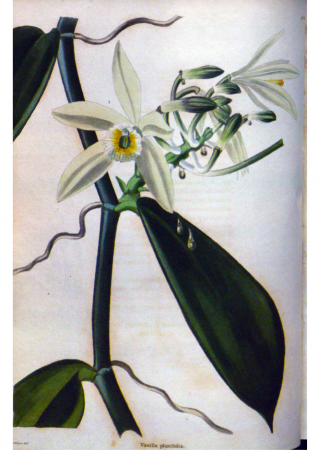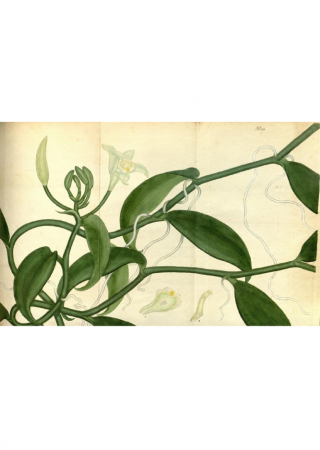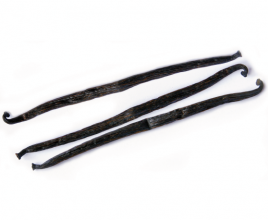Vanilla
- …vanilla pods are long and lender fruits of a climbing orchid, which can climb tropical trees to a height of 15 meters?
- …vanilla is an epiphytic plant? So-called air roots serve to extract moisture from the surrounding air, and from humus caught in cracks in the bark of the tree on which it climbs, it gets nutrients.
- …Indians used dried vanilla pods as currency?
- ...Aztecs discovered fermentation, which is an alternating of drying in the sun and allowing to dampen in the shade? This caused the formation of white crystalline vanillin, without which vanilla would have practically none of its typical flavor.
- …vanilla is the youngest of the so-called classic spices, used in Europe and is the mildest of all spices?
- ...Toltecs and Aztecs believed that vanilla evokes strength, vanquishes fatigue and fear, strengthens the heart and primarily is a strong aphrodisiac?
- …the high price of authentic vanilla led to the appearance of many imitation vanillas, often synthetically created?
- …vanilla as a spice is the dried pods, sometimes seeds of the Vanilla planifolia plant?
Pascha
800 g nonfat cottage cheese
400 g butter
400 ml whipping cream
400 g sugar
3 egg yolks
2 tablespoons lemon peel
package vanilla sugar
100 g candied fruit, alternatively gelatin
Mash cottage cheese with sugar and butter. Beat remainder of sugar with egg yolks and add to cottage cheese mixture. Mix thoroughly. Add lemon peel and vanilla sugar. Whip cream and add to mixture, lastly mix in candied fruit. Line a cake pan with baking cloth, pack in mixture, fold over corners of cloth and weigh down the mixture to ensure a firm consistency and set aside for 2-3 days in a cool place, preferably a refrigerator. Before serving, decorate with candied fruit or a thin layer of colored gelatin.
Vanilla beans, more correctly pods, were brought to Europe by Spaniards in 1521. Aztecs used vanilla to flavor their chocolate, which was supposed to enhance the sexual appetite. The name vanilla comes from the Spanish "vainilla" – pod. In 1519 the Spanish conquistador Hernán Cortez met the Aztec ruler Montezuma in Mexico, and saw him sipping a fragrant liquid from a gold cup. Cortez and his entourage sampled the drink, which was a mixture of cocoa beans, vanilla, honey and other spices for coloring. They were so impressed that upon their return, they wanted to introduce this new beverage to Spain. However, it took several more decades before Spain, and later France, embraced Aztec chocolate.




